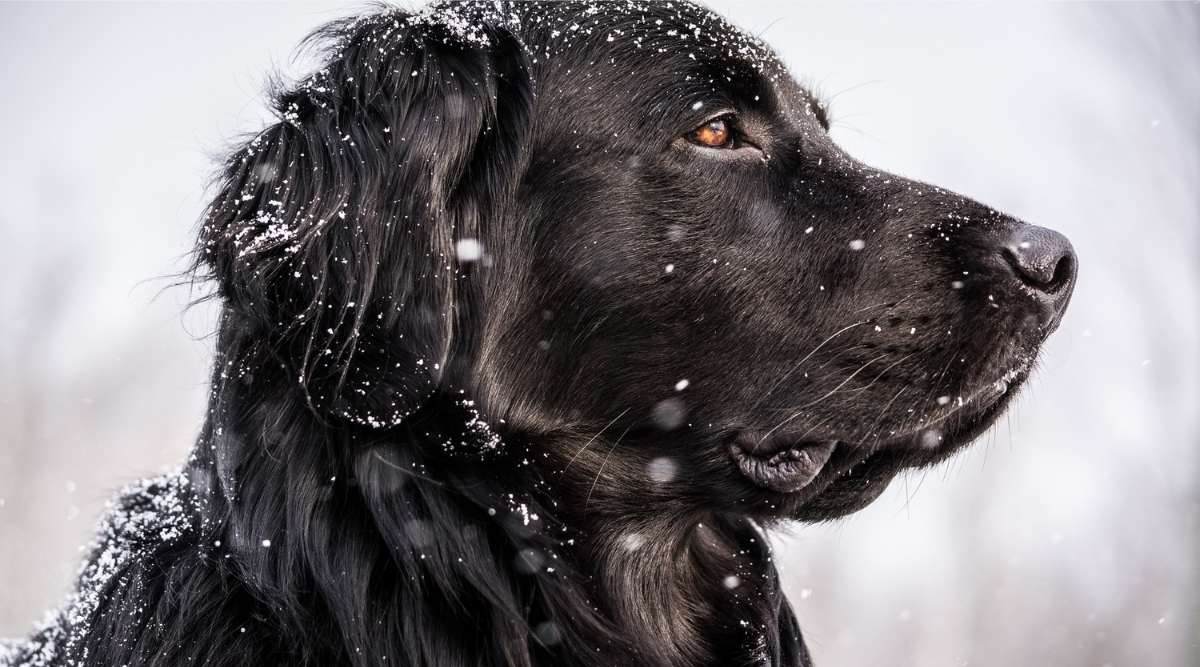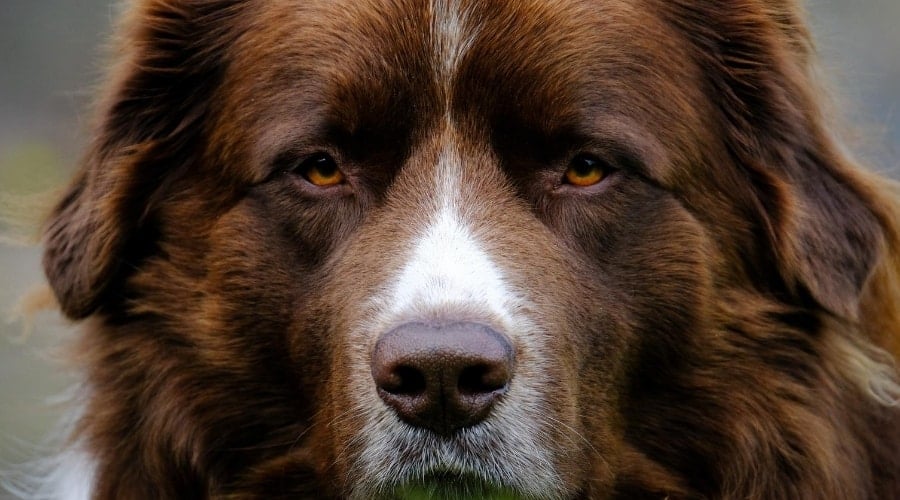German Shepherd Labrador Retriever Mix: Sheprador Puppies, Prices & More
When you purchase through links on our site, we may earn a commission. Here’s how it works.
The German Shepherd Lab mix is a loyal dog and is also known affectionately as the Sheprador. It’s a blend between a purebred German Shepherd Dog (GSD) and a Labrador Retriever. Inheriting traits from both parents, these dogs are intelligent and loyal. They are well known for their guarding abilities and willingness to train. They have very different personality traits.
Table of Contents
The Sheprador is excellent with children and makes a loving companion. They can be wary of strangers when their Shepherd parent’s traits kick in. Because this is a mixed breed, it is impossible to tell exactly what characteristics each puppy might have. A puppy might look like a GSD but act like a Labrador Retriever. You may get a dog that looks like a Lab but has the protectiveness and fearlessness of the GSD.
With all that being said, the Sheprador is a popular mix that you’ll want to thoroughly research before bringing one home. They can make excellent family dogs but have an independent streak. Because of this, it’s not the perfect breed for everyone. Let’s jump in and find out more about the amazing German Shepherd Lab mix.
Parent Breeds
In order to fully understand what you can expect with this mix, it’s essential to understand the parents. While most people are familiar with the German Shepherd and the Labrador Retriever, it’s always good to freshen up on your breed knowledge.
There are primarily positive traits that each of the parent breeds carries, as these are the two most popular dog breeds in the United States. Let’s take a look in detail at each parent and what they bring to the table.
German Shepherd
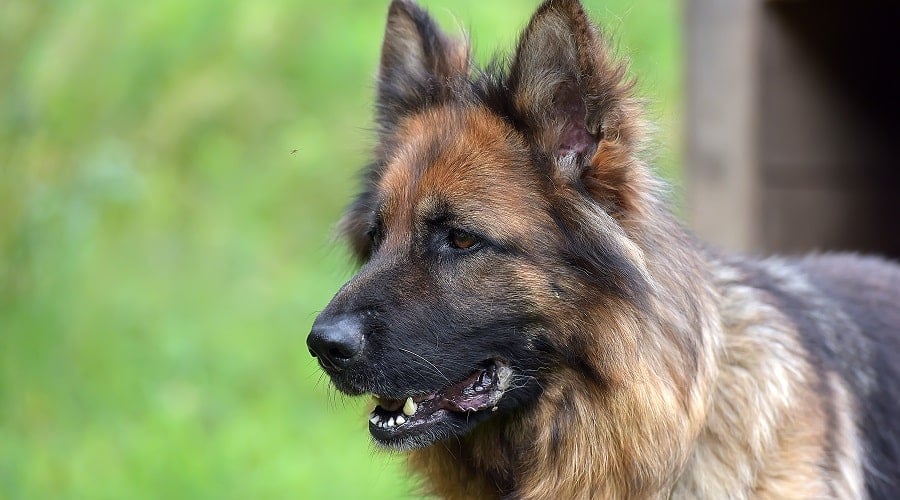
The GSD is a strong, working breed, which is apparent in their appearance. They’re built practically, with solid muscles and wolf-like features. Their body is longer than it is tall and overall evenly proportioned. These dogs are typically described as medium to large. Their exact size can vary quite a bit depending on their parentage. Usually, they weigh between 50 to 90 pounds. Their height can also vary but usually falls between 22 to 26 inches.
Their coat is two-layered and very dense. They also shed quite a bit and regularly “blow” their coats. The exact length of their coat varies from medium to long. However, the long-hair gene is recessive and rarer. Most commonly, German Shepherds come in black and tan or black and red. They typically have black masks as well as other black markings, including a black “saddle.” Rarer color patterns, such as sable, black, white, liver, silver, blue, and panda, also exist.
The German Shepherd is known for being highly intelligent and also having a loyal and protective nature. They are very dedicated to their family and make excellent guard dogs. It is essential for German Shepherd puppies to be well-socialized to prevent unwanted aggression. These dogs can be accepting of strangers as long as they are introduced to many different people in their early years. Because of their popularity, German Shepherds are often mixed with other breeds. Popular crossbreeds include the Shepsky and the Shepadoodle mix.
Labrador Retriever
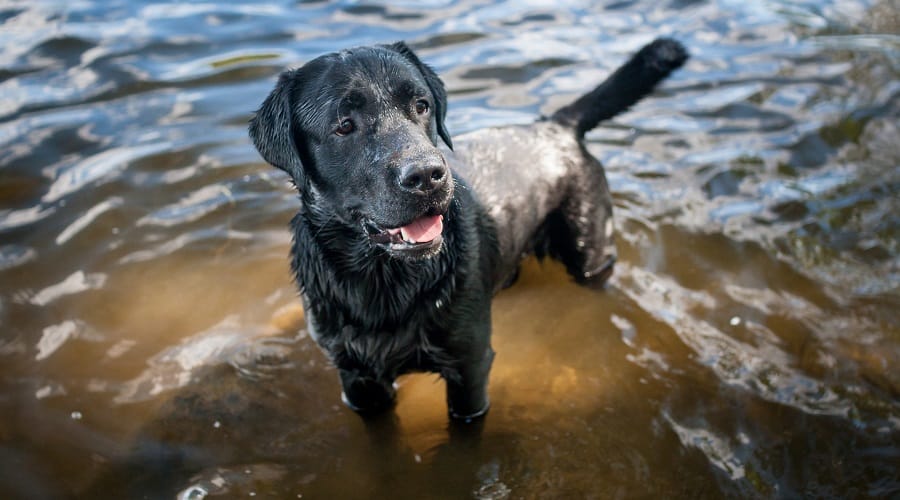
Labs are also considered medium to large dogs. These dogs typically weigh between 55 to 80 pounds. Males are typically larger, but this is not always the case. While these dogs are mostly companion animals today, they were initially bred to retrieve game. Because of this, many of their traits are designed for this purpose.
However, this breed’s show lines and working lines diverged, making them different in appearance. Bench Labs differ from field Labs. They are typically medium-sized with shorter, stocky bodies. Field Labs usually have longer legs with lighter frames.
No matter their line, these dogs have short and dense coats. Their coat is weather-resistant and can repel water well. They were originally designed to withstand the cold water in the winter, and even companion dogs still have this trait today.
Labs are loved by many due to their easygoing, gentle nature. These dogs are loving and get along with nearly everyone. They are laid back and gentle, which makes them a great fit for children. They love to play with toys and enjoy certain types of training, which include agility, flyball, and more, as they are sporting class dogs. Popular Lab mixes include the Huskador and the Pitador.
Sheprador

The German Shepherd Lab mix is an excellent breed that combines the best of both parents. They can be dignified yet active and do very well in multi-pet households if socialized properly. This mix is often called “Shepradors,” but also goes by “Lab Shepherds,” “Labrasheps” and the typical “German Shepherd Lab mix.” There are likely other names not listed, but these are the most commonly used names for this particular mix.
The Sheprador is a healthy mix that will often live to 10-13 years if taken care of properly. While they do have some potential health problems, they are often mitigated by the fact that this breed is a mix. You can expect lots of fun and a long life with your Sheprador, so let’s get into the details of this fun-loving mixed breed.
Temperament
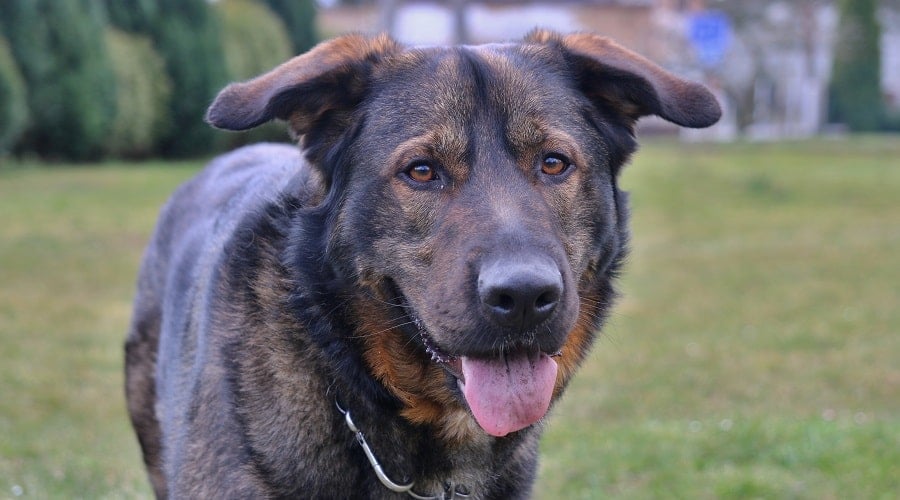
Shepradors are quite intelligent. Both parent breeds have high intelligence and are very trainable, so you can expect the same thing from yours when you bring them home. How your Sheprador will react with strangers will largely be based on how they are trained. Early socialization is key, and we recommend enrolling your pup in obedience training as a puppy.
Most of the time, the German Shepherd Lab mix will inherit its Labrador parent’s friendly nature while still being slightly reserved with strangers. It won’t go to either extreme and will likely take on the better traits of both breeds.
In most situations, Shepradors are not aggressive to humans or other dogs. Even though their German Shepherd parent is known for being slightly more aggressive, that usually comes down to the owner and the fact the dog hasn’t been trained properly. Both parent breeds make excellent family pets, and your Sheprador should be no different.
When raised with other animals, Shepradors do well in multi-pet households. They are also great with kids if they are either raised with them as puppies or given consistent behavioral guidance. The Sheprador has an independent streak, but not too independent that a first-time dog owner can’t handle them.
If you have a multi-pet household, we recommend slow introductions unless you’ve adopted a puppy. The Sheprador will have some natural flock guardian instincts, so work with them early on to train out that behavior if it’s bothersome.
Size & Appearance
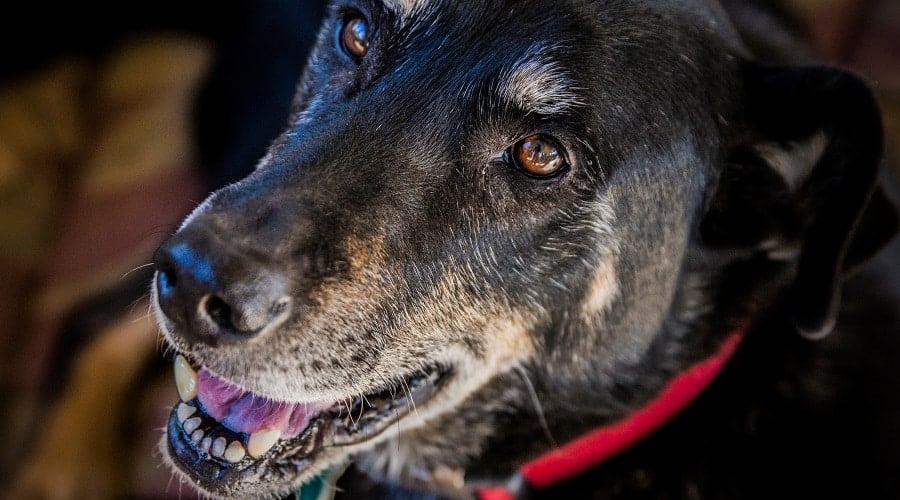
A German Shepherd Lab mix will vary in size and appearance. They can look exactly like a GSD, or they could look exactly like a Lab. Usually, you can expect a fully grown adult somewhere in the middle. Shepradors will grow to no more than 22 inches in height in most cases and generally weigh between 40 and 80 pounds. They will not get as big as a Lab or as small as a smaller Shepherd in most cases.
The Sheprador will be muscular in tone and be quite active. Inheriting their Lab parent’s appetite, you will need to monitor food intake. Shepradors can gain weight quickly if they overeat and don’t exercise enough.
This mix will usually have brown eyes. The shape of their eyes is usually diamond-shaped, but this does have some variation. Their nose is nearly always black with a longer snout.
Coat & Colors
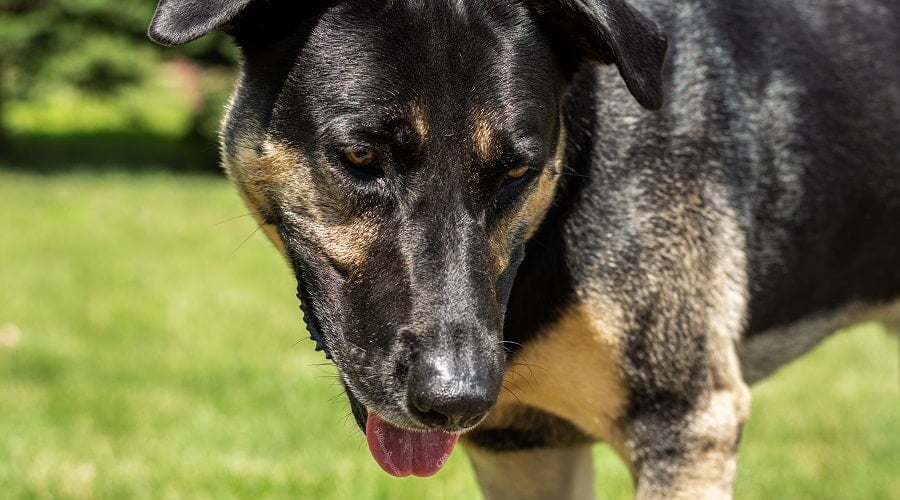
A Sheprador’s coat may or may not be weather resistant. They are double-coated pups and will have medium-length to short-length hair. The hair length of the German Shepherd parent plays a large role in the puppy’s coat length. If they came from a long-haired German Shepherd, there’s a possibility they will have longer hair.
These dogs can be a large variety of colors. The color of a particular puppy is affected heavily by the coat colors of the parents. A dog with two black parents has a high chance of being black as well. Markings are somewhat more unsure due to the huge number of genes at play. You could end up with a pup that’s black, yellow, red, black and tan, or brown and anything in between!
Exercise & Living Conditions
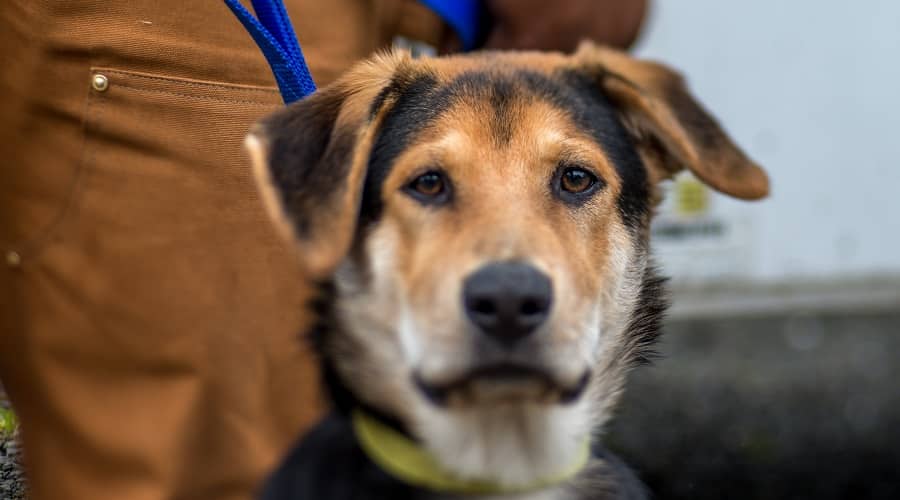
The German Shepherd Lab Mix is an active breed. Both parents are working breeds, so they need to be stimulated appropriately. They do train easily, and that includes crate training. You can get the same type of crate you’d get for a normal GSD, as they are similar in size.
Shepradors should have access to a place to run regularly. A fenced-in backyard is best. These dogs do not do well in apartments. About forty-five minutes to an hour of heavy exercise should be expected. These pups love to play, so an active family should adopt them. Apartment living is fine, provided they are exercised daily.
The German Shepherd Lab mix will also need quite a bit of mental stimulation. Obedience training is a great way to stimulate their brains and tire them out. A 15-minute training session each day is usually good enough to have your pup learn proper behavior. If your Sheprador starts acting hyper, you may need a trip to the park or a walk around the block to fully tire them out.
Training
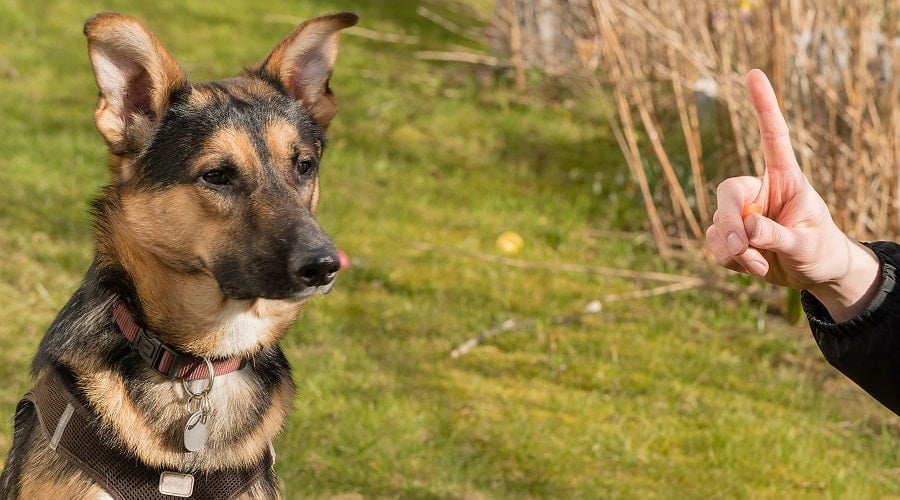
The German Shepherd Lab mix is an easily trained pup. Both parent breeds are extremely intelligent. You don’t have to worry about repeating commands multiple times like some lower IQ breeds. Shepradors are eager to learn. While they need a strong owner who is consistent, you shouldn’t be too harsh as to hurt their feelings.
Basic obedience is great, but Shepradors also excel with a job to do. They make wonderful service dogs and do great as a nursing home companion. When training, we recommend using positive reinforcement techniques. Because their Lab parent can be sensitive, using aversive techniques is not recommended.
Health
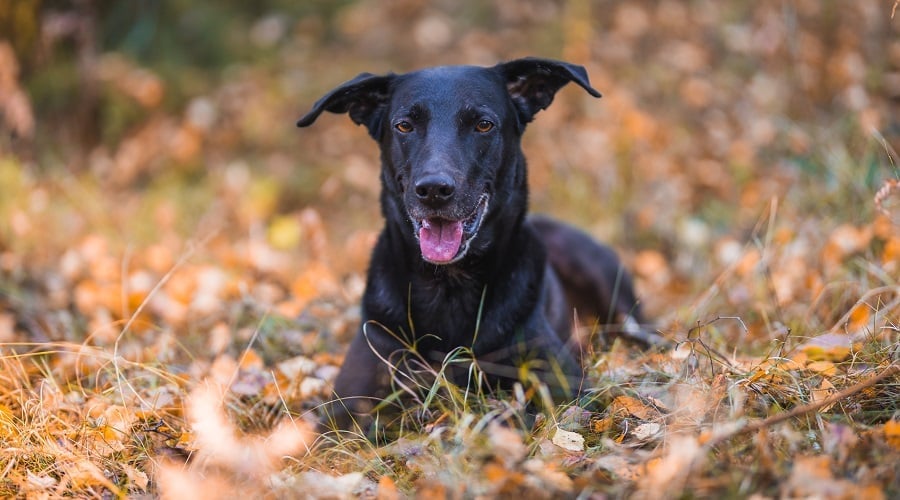
In general, mixed breeds are healthier than purebred dogs. This is because purebred dogs have a much smaller gene pool. The German Shepherd Lab mix is no different. Each member of a purebred breed is genetically similar to all other members. This makes it easier for genetic mutations to spread throughout the population. Mixed breeds are much healthier because they come from a larger gene pool. Still, while German Shepherd Lab mixes are considered healthy, they are prone to a few health problems.
Possible Health Concerns for The Sheprador
Hip Dysplasia: Many large dog breeds have trouble with hip dysplasia. There is some possibility that a German Shepherd Lab mix will, too. Hip dysplasia occurs when the hip socket doesn’t form correctly. This can cause arthritis and even lameness in severe cases.
Bloat: Bloat is a sudden, life-threatening condition that involves a dog’s stomach. It is common in German Shepherds and, therefore, might affect this mixed breed. Basically, this disease occurs when the stomach becomes twisted and begins filling with gases. This can cause the stomach to stretch and even bust. Bloat is nearly always treated with emergency surgery. This condition can kill very quickly, so it is important to get the affected dog to the vet as fast as possible.
Allergies: Allergies in dogs typically present as skin conditions and are common with Labs. They might develop redness, start scratching constantly, and lose their hair. The dog might constantly scratch, which can cause even more skin problems. These can be treated with a sensitive skin shampoo and medication prescribed by your veterinarian. Some dogs have food allergies and will need a special diet to avoid those triggers.
Shepradors can live anywhere from 8 to 13 years. Most will live past 10 without any health issues. The combination of both breeds helps genetically diversify the dog, which usually results in fewer health issues as your dog ages. It limits inbreeding, which is generally where most genetic health defects stem from.
Nutrition
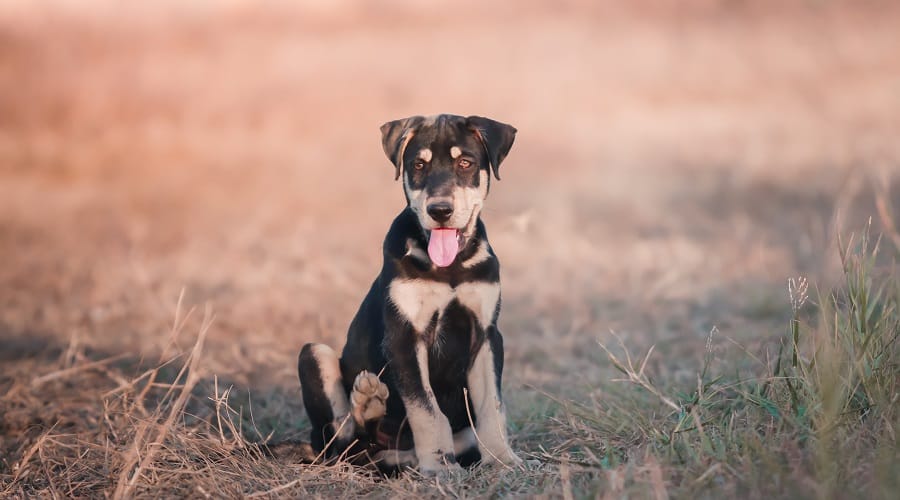
Shepradors are medium to large breed dogs. Nutrition is important, and you’ll want to start them on a premium, large-breed puppy food if you adopt a puppy. Setting the stage at an early age with high-quality food will ensure your dog stays healthier into their adult years.
When choosing the best food for your dog, there are a couple of things to keep in mind. Firstly, grain-free is not necessarily better. In fact, unless your dog is allergic to gluten, they should be on a grain-inclusive food. Dogs have adapted to eating grain, it is not harmful.
Shepradors will do well as adults on a high-quality dry kibble. We recommend looking at grain-inclusive foods unless your pup is allergic, and brands like American Journey have multiple options. As your pup ages, senior dog food will be more appropriate. You’ll want the glucosamine boost, given the parent breed’s propensity for hip issues as they age.
Grooming
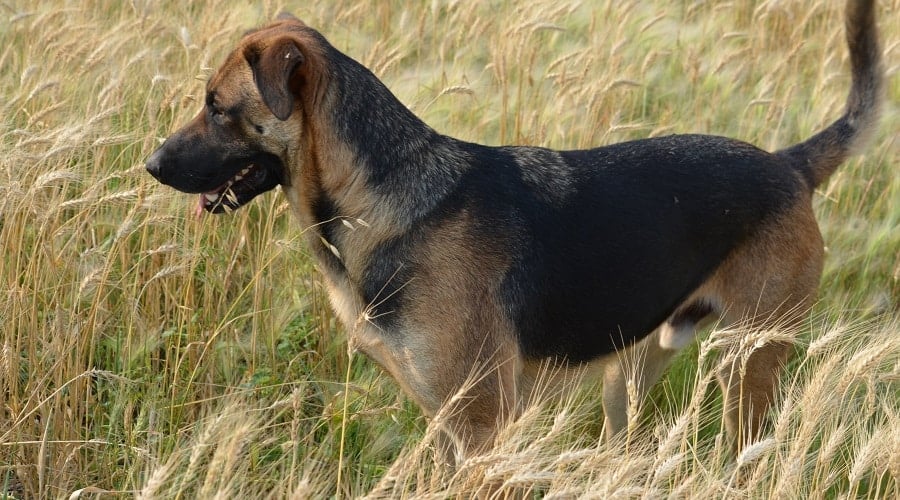
The German Shepherd Lab mix will have a lot of hair and will need to be brushed accordingly! Even though they will have shorter hair than most German Shepherds, they should be brushed daily. You will want to brush them outside or buy a nice vacuum to handle the pet hair. These pups also blow their coat twice a year. This means lots of fur on your carpet or in your home.
Shepradors should be bathed as needed. Excessive bathing can cause skin irritation. They have a knack for getting irritated skin, so bathing with an oatmeal shampoo may help. If your German Shepherd Lab mix has floppy ears, you will have to clean them regularly. Dust and debris can get stuck in floppy ears, causing infection. Since Shepradors have long and floppy ears, this is something you’ll want to monitor closely.
The German Shepherd Lab mix has been known to have dental issues. Both parent breeds carry dental problems if not properly maintained. We recommend having a groomer take care of this. You can also buy a toothbrush and take care of it yourself if your pup will let you.
Puppies & Breeders
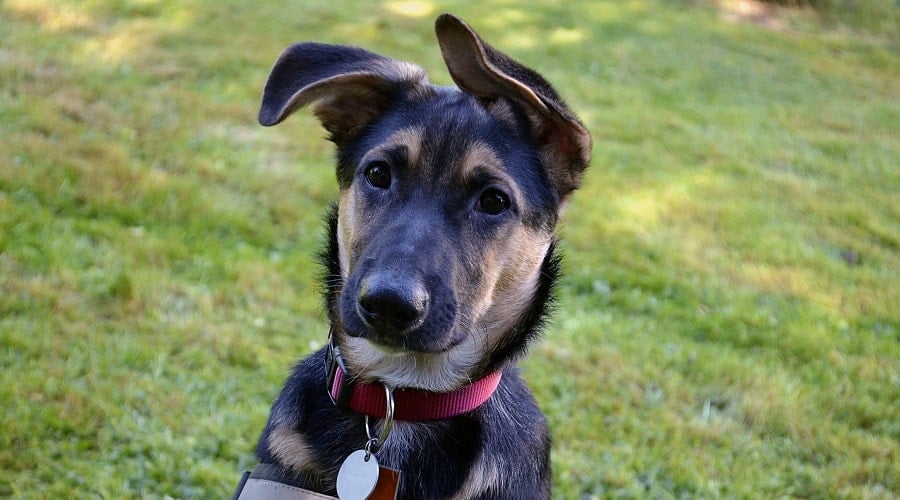
German Shepherd Lab mix breeders can be found fairly easily. This is a more common designer dog breed, so that means it will be easier to find a puppy. It also means you’ll need to do your research. When there are more breeders, some of them are bound to practice unhealthy breeding standards.
We recommend that you research breeders online, starting with social groups. Ask around and talk to friends and family before you buy a pup. Backyard breeding is more likely to cause birth defects and an unhealthy pup that ends up at the vet. If you adopt a Sheprador, expect to pay north of $800 for a puppy. Since it’s not an AKC-recognized breed, your puppies won’t have papers, but the parents should.
Rescues & Shelters
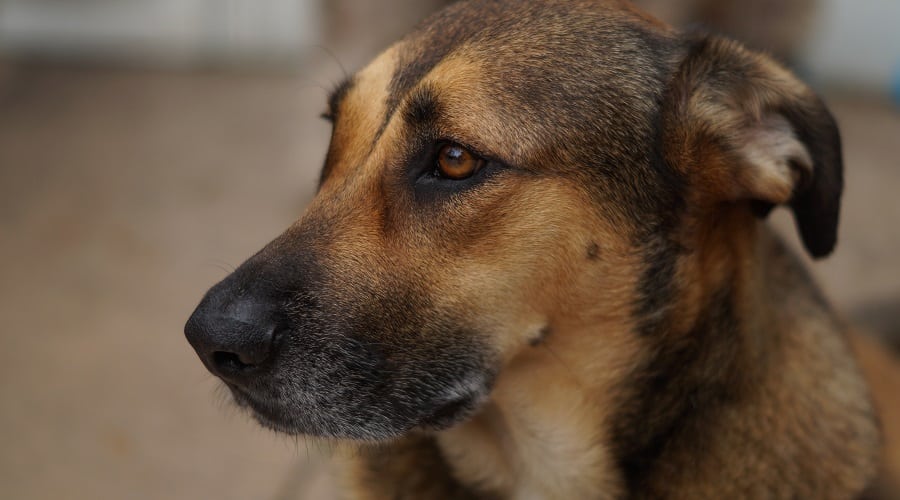
We always recommend that you adopt before you shop. Rescues can oftentimes welcome mixed-breed dogs, and it’s likely you can find a Sheprador if you do your research. Adopting a rescue pup is not only cheaper but also ensures that you can help save a life. It’s not uncommon for a Sheprador to end up in a German Shepherd rescue or a Labrador Retriever rescue. We recommend looking for reputable rescues that have the best interest of the dog in mind.
German Shepherd Lab Mix As Family Pets
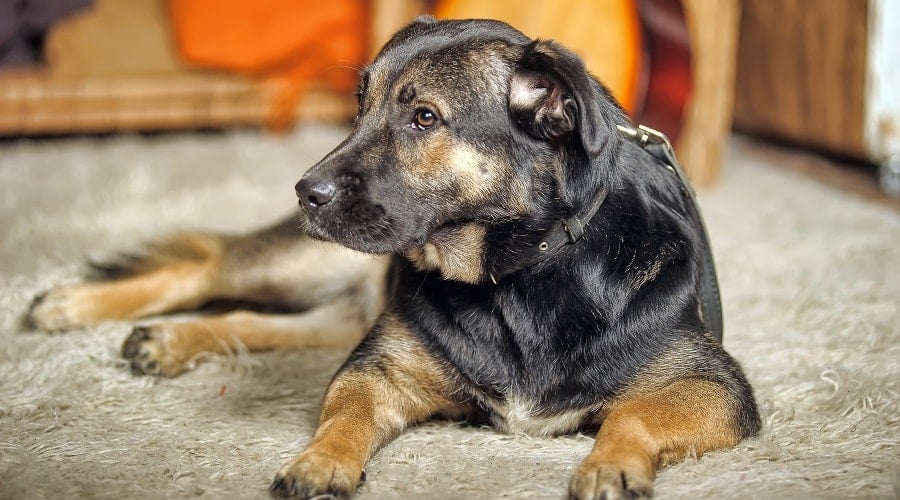
The German Shepherd Labrador mix will be a fantastic family dog with proper training. They can get along well with other pets in the home, provided they are properly socialized. Shepradors love being at home with their family and shouldn’t be left alone for long periods of time. These pups will do extremely well with kids, oftentimes acting as the protector in dangerous situations.
When bringing a Sheprador home, we always recommend slow and proper introductions. If you have kids or other pets, gradually introduce them. If you are adopting an older dog or a rescue dog, it can take time for them to settle in. You want your pup to enjoy their new surroundings and not fear them. Puppies are a little easier to introduce, but we still recommend slow introductions if you have other pets. Overall, Shepradors make wonderful family companions and do well in most families.
Final Thoughts
If you can handle the exercise needs, the Labrador German Shepherd mix is a great breed for just about any family. These dogs won’t drain your wallet like many purebreds do, both in puppy cost and in vet bills. With their strikingly good looks and charming personality, this mix could be your next best friend! We recommend the breed and always encourage you to Adopt before you shop!
